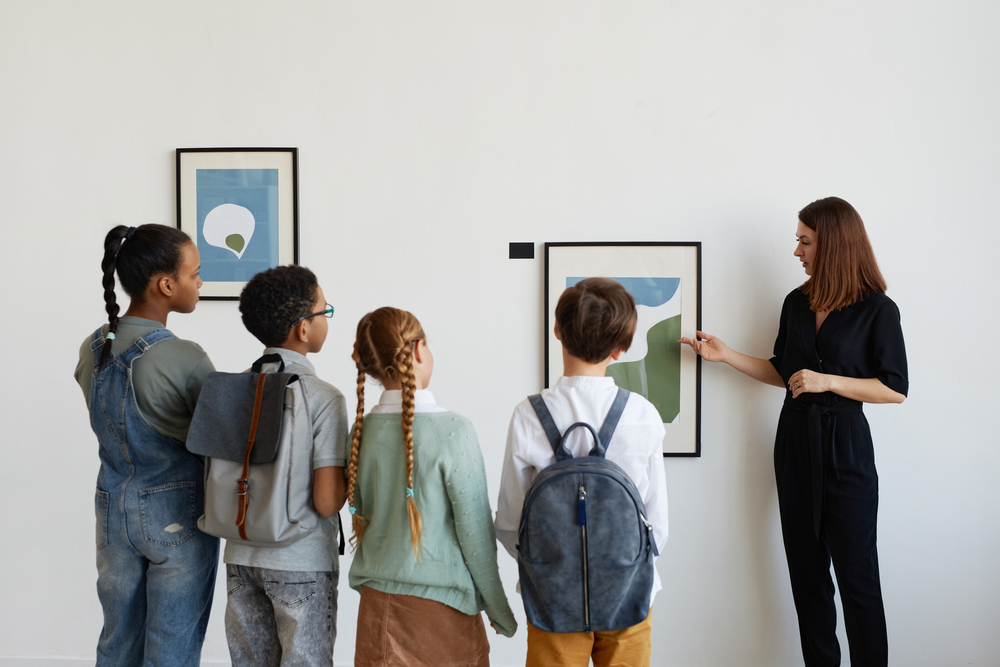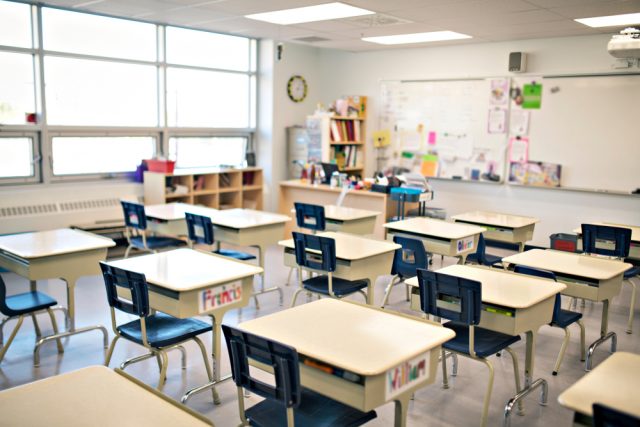Art Appreciation for Kids & Critical Thinking
- May 8, 2023
- By Julie Knutson
Art Appreciation for Kids

Two seconds. Ten seconds. Seventeen seconds. Thirty-two-and-a-half seconds . . . estimates of the average amount of time that museum-goers spend in the company of a given painting. These numbers testify to the difficulty of being fully attentive to art, even for adults who voluntarily enter the museum’s hallowed halls.
So is there a way to help students escape the cycle of looking without really seeing and to encourage meaningful engagement with art? How can we as teachers cultivate visual literacy and art appreciation for kids, and what’s the value in doing so?
Why look at art?
With programs perennially on school district chopping blocks, it’s worth revisiting the benefits of art education. Educational philosopher Maxine Greene notes that the arts make the full range of human experiences accessible. Whether ambling down a road less travelled with Robert Frost or strolling through a Parisian park with the Impressionists, art sparks imaginings of the real and fictional lives of others. Beyond this, experiencing art drives students to follow their own creative impulses, fostering self-understanding and empowerment. It also molds active learners who think before deeming an object “good” or “bad.” This skill — analyzing before judging — is an important one that transfers to other realms.
Arguably, teaching visual literacy holds another value for twenty-first century students — learning to be mindful and in the moment. Closely examining a painting, photograph, film, or sculpture offers an antidote to the near-constant stimuli with which children are bombarded, allowing kids to slow down through exercises that require time, discipline, and patience.
Engagement, response, and evaluation
How do you get kids to focus on an art object for more than two, ten, seventeen, or thirty-two-and-a-half seconds? Guiding students through a process of engagement, response, and evaluation creates more meaningful encounters with art.
To engage students with art, ask them to simply look at an image and name what they see. Whether done quietly and in writing or in conversation, this activity encourages students to interact with objects beyond a fraction of a second. To demonstrate that each person brings a unique perspective to a work, have each member of the class share what they notice. This process shows that discussing art with others can reveal new and previously unseen dimensions of it.
Next, have students respond to the object. How did it make them feel? What do they know about the time and place in which it was made? Who are the subjects and what are the themes? In this phase, students apply their existing skills and knowledge, bridging topics from a range of subject areas.
Finally, evaluate. Based on what students know about the work’s context, ask them to explain what its appeal would have been for audiences during the time period in which it was made. As a follow-up, analyze whether or not the object holds that same power today.
Working through this three-step process of engagement, response, and evaluation empowers students to move past superficial reactions to thoughtful critique of art. In so doing, students begin to look and see, visually engaging with art in ways that are anything but cursory.
Resources
Countless resources are available on visual literacy and incorporating art into classroom teaching. Here are a few to get you started:
Diaz, Gene and Martha Barry McKenna (eds.). Teaching for Aesthetic Experience. Boston: Lesley University Series in Arts & Education, 2004.
Ewald, Wendy. I Wanna Take Me a Picture: Teaching Photography and Writing to Children. Boston: Beacon Press, 2002.
Greene, Maxine. Releasing the Imagination: Essays on Education, the Arts, and Social Change. San Francisco: Jossey-Bass, 1995.
Kohl, Herbert R. and Tom Oppenheim (eds.). The Muses Go to School: Inspiring Stories About the Arts in Education. New York: The New Press, 2012.
Kids Discover Kids Discover Online Art Appreciation for Kids


